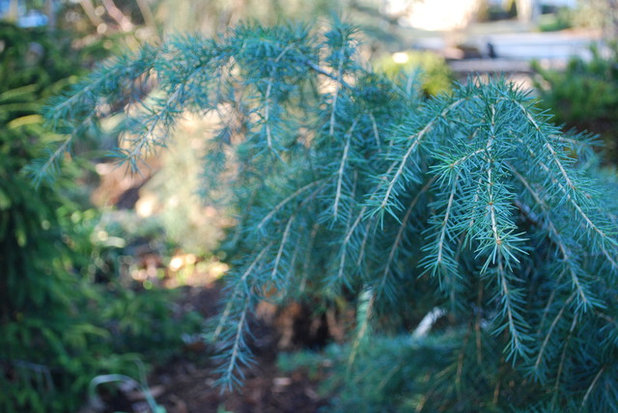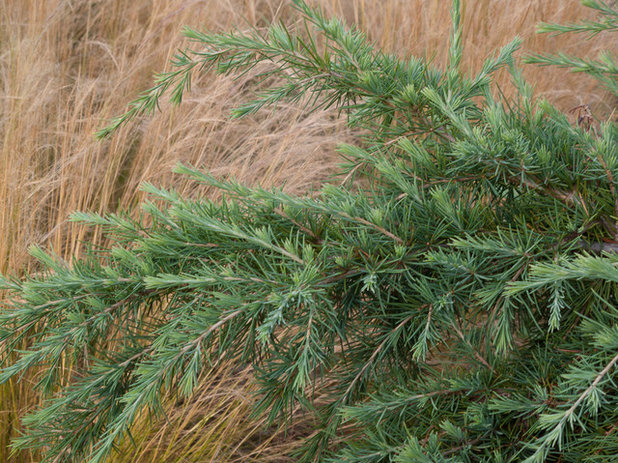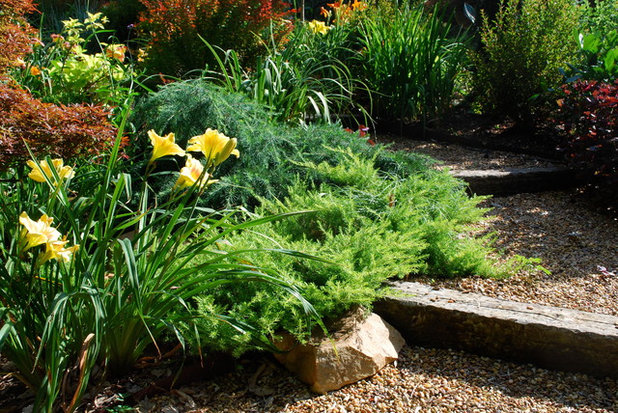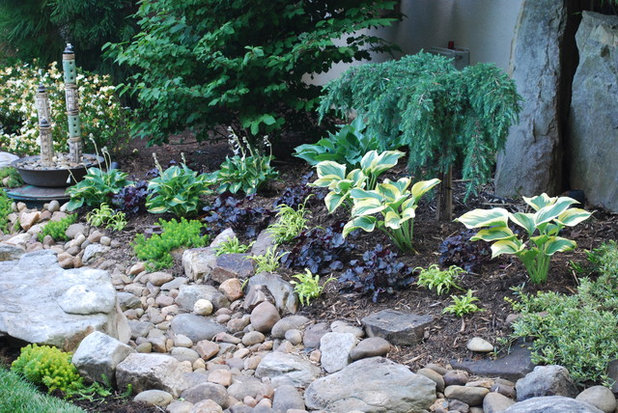In our hurried lives, we seldom take time to look down. But when we do, we discover subtle gems that go unnoticed by most. So it is in our gardens. Take cedars, for example. Their bold, majestic forms rule the forests in which they grow, where they may reach heights of 80 or more feet. And one diminutive cedar pulls its weight in even the smallest urban courtyard garden. Meet Feelin’ Blue deodar cedar.

Jay Sifford Garden Design
Botanical name: Cedrus deodara ‘Feelin’ Blue’Common name: Feelin’ Blue deodar cedar
Origin: The species is native to the Himalayan mountains, Pakistan, Afghanistan, India and Tibet. It has a rich history in the Sanskrit, Hindi and Chinese languages and culture.
Where it will grow: Hardy to 0 degrees Fahrenheit (USDA zones 7 to 9; find your zone)
Light requirement: Full sun is best, but it will adapt to partial shade.
Water requirement: Average (1 inch of water per week) but once established, it’s somewhat drought tolerant.
Mature size: 2 feet high and 4 to 6 feet wide

Le jardinet
Benefits and tolerances: Resistant to deer, rabbits and insects; drought tolerant once established
Seasonal interest: This cedar provides year-round evergreen structure in the garden. Its soft bluish-gray textural foliage makes it a good companion to a wide variety of perennials, shrubs and upright conifers.
When to plant: Spring or fall is preferable.
Distinguishing traits: This underused conifer differs from its larger relatives in that it is prostrate, rarely reaching a height of more than 2 feet while growing horizontally. As a young plant, it is frequently confused with shore junipers and bypassed at the nursery because of its higher price. Once it matures, however, it commands attention on the garden floor.

Jay Sifford Garden Design
How to use it. Its bluish-gray foliage plays wells with that of its neighbors, particularly chartreuse, orange or burgundy foliage. It is, therefore, a great companion plant for red Japanese maple (
Acer palmatum var dissectum,
zones 5 to 8), Rose Glow or Orange Rocket barberry (
Berberis thunbergii cvs, zones 4 to 9) and Golden Pacific shore juniper (
Juniperus conferta ‘sPg-3-016’ zones 6 to 9), as shown here. Feelin’ Blue is the perfect plant to strategically position over a boulder, metal pathway edge or bluestone patio to soften hard edges and introduce different texture into the scheme.

Jay Sifford Garden Design
Feelin’ Blue is also available grafted onto a standard, giving you a trunk of up to 3 feet — great if you need a bit of height in your garden. This form expands the possibilities for this plant’s use at the back of a border.
Planting notes. Plant Feelin’ Blue in average to moist, well-drained soil in full sun to partial shade.
More:10 Evergreens for Beautiful Foliage All Year
Stretch the Budget, Seasons and Style: Add Conifers to Your Containers





